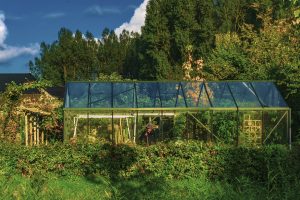Innovations in Sustainable Food Systems
Innovations in sustainable food systems are at the forefront of addressing the dual challenges of ensuring food security and protecting the environment. As the global population continues to increase, the pressure on food production systems intensifies, necessitating transformative approaches to farming, distribution, and consumption. One innovative approach is precision agriculture. Utilizing advanced technologies such as GPS, drones, and IoT devices, precision agriculture allows farmers to optimize field-level management regarding crop farming, enhancing productivity while minimizing waste. These technologies provide farmers with real-time data on crop health, soil conditions, and resource usage, leading to efficient water and fertilizer application, which reduces environmental impact.
Hydroponics and aquaponics are gaining traction as sustainable cultivation methods. Hydroponics involves growing plants in nutrient-rich water without soil. This method significantly reduces water usage and allows crops to grow in urban environments, decreasing the need for transportation. Aquaponics combines fish farming with plant cultivation, creating a symbiotic environment where fish waste provides nutrients for plants. This closed-loop system minimizes inputs and outputs, offering a sustainable alternative that can be implemented in various settings, from greenhouses to urban rooftops.
The role of biotechnology in sustainable food systems is also noteworthy. Genetic engineering and CRISPR technology have made it possible to develop crop varieties that are resistant to pests, diseases, and adverse climate conditions. These innovations can lead to higher yields and reduced reliance on chemical pesticides and fertilizers. Additionally, such technologies are being used to enhance the nutritional profile of crops, combating malnutrition.
Sustainable food systems are also being revolutionized by vertical farming. This approach involves growing crops in stacked layers, often in controlled-environment buildings. Vertical farms use artificial lighting and climate-controlled facilities to optimize growing conditions, allowing for year-round cultivation. This method reduces the need for land and can be situated closer to urban centers, reducing transportation-associated emissions.
Agroforestry, or the integration of trees and shrubs into farming landscapes, is another sustainable practice gaining popularity. This system enhances biodiversity, sequesters carbon, and improves soil health, offering food production that aligns with ecological principles. Agroforestry can provide multiple outputs—such as timber, fruits, and nuts—while simultaneously offering environmental benefits, making it an attractive option for sustainable landscape management.
Livestock farming is being transformed through lab-grown meat and plant-based alternatives. Lab-grown meat, cultivated from animal cells, eliminates the need for raising and slaughtering animals, significantly reducing land, water use, and greenhouse gas emissions. Similarly, plant-based meats mimic the taste and texture of traditional meat products while offering a sustainable alternative, appealing to a growing consumer base prioritizing ethical consumption.
Blockchain technology plays a crucial role in enhancing transparency within food systems. By providing an immutable ledger of transactions, blockchain ensures traceability from farm to table. This transparency enables consumers to make informed decisions and fosters trust across the supply chain. Furthermore, blockchain can aid in reducing food fraud and waste, as precise tracking helps identify inefficiencies and areas for improvement.
Renewable energy is being increasingly integrated into agricultural processes, reducing reliance on fossil fuels. Solar panels, wind turbines, and biogas systems provide cleaner power options for farms, decreasing carbon footprints. These renewable systems not only power farm operations but also contribute to local grids. Innovations like energy storage and smart grids help manage the intermittent nature of renewable sources, ensuring consistent power availability.
Digital platforms and apps facilitate communication and resource sharing among farmers, consumers, and other stakeholders. These tools provide vital information on best practices, market prices, and weather conditions, improving decision-making and fostering collaboration. E-commerce platforms also enable small-scale farmers to reach broader markets, enhancing profitability and reducing food waste by matching supply with demand more effectively.
The use of artificial intelligence (AI) and machine learning is streamlining various aspects of food production. AI-driven systems analyze vast amounts of data to forecast yields, predict pest outbreaks, and enhance supply chain management. These insights help farmers and stakeholders make data-driven decisions, optimizing processes and reducing environmental impacts.
Social innovations, such as community-supported agriculture (CSA) and urban farming initiatives, are reshaping how people engage with food systems. CSAs create direct links between consumers and local farms, fostering a sense of connection and accountability. People invest in a farm’s harvest in advance, receiving fresh produce throughout the season. Urban farming initiatives transform city spaces into productive gardens, enhancing food security and promoting community involvement.
The increasing focus on reducing food waste is crucial for sustainable food systems. Innovations like food-sharing platforms and advanced packaging materials extend shelf life and encourage responsible consumption. Technologies for composting and converting waste to energy are also evolving, helping to recycle nutrients and reduce landfill contributions.
Policymakers play a pivotal role in fostering sustainable food innovations. By providing incentives for adopting sustainable practices and investing in research and development, governments can accelerate the transition towards more resilient food systems. Supportive policies can also address barriers to market entry for innovative solutions, ensuring that sustainable practices are scalable and accessible.
Education and awareness are essential in driving consumer demand for sustainable products, which encourages businesses to adopt greener practices. Educational programs emphasizing the importance of sustainability can cultivate a culture of responsible consumption and support community-led initiatives aimed at local food systems and environmental stewardship.
Ultimately, the innovations transforming sustainable food systems are interconnected, each contributing essential elements toward a regenerative and resilient global food network. Continued investment in technology, policy support, and consumer education are key to advancing these innovations and ensuring a future where both people and the planet can thrive.




